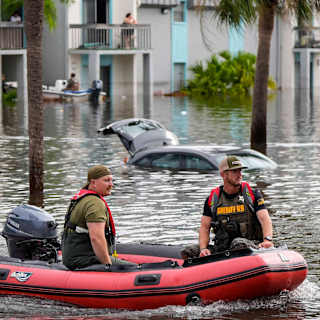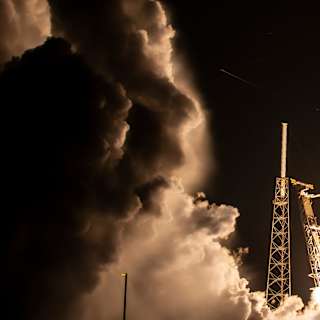- Double Mission Day
- European Weather Revolution
- Launch Tempo
SpaceX faces a challenging Tuesday with two Florida launches on the books despite threatening weather that could ground both missions. The company plans to launch 27 Starlink satellites early this morning and a European climate monitoring satellite this evening, marking another ambitious day for the aerospace giant's packed 2025 schedule.
The 45th Weather Squadron forecasts just a 20 percent chance of favorable conditions for the evening launch of the Meteosat Third Generation Sounder satellite from Kennedy Space Center, with conditions deteriorating to 10 percent Wednesday. A storm system south of Florida has been generating thunderstorms along its boundary, creating hazardous launch conditions.

The Starlink Group 10-25 mission launched at 2:06 AM EDT from Cape Canaveral Space Force Station, carrying another batch of internet satellites to low-Earth orbit1. The evening mission, scheduled for 5:04 PM EDT, will deploy the MTG-S1 satellite for the European Space Agency and EUMETSAT during a 150-minute launch window23.
The MTG-S1 represents a leap forward in weather forecasting technology. Unlike traditional weather satellites, this spacecraft will provide three-dimensional atmospheric profiles every 30 minutes from geostationary orbit 36,000 kilometers above Earth45. The satellite carries an infrared sounder that measures temperature, humidity and trace gases at different altitudes, plus the European Union's Copernicus Sentinel-4 instrument for air quality monitoring.
"MTG-S1 will provide entirely new types of data products that will support specialists across EUMETSAT member states to detect signs of atmospheric instability even before clouds begin to form," said Phil Evans, EUMETSAT's Director-General1. The satellite joins the Meteosat-12 imager launched in 2022, forming part of a six-satellite constellation designed to serve Europe for the next two decades.
The infrared sounder represents the first European geostationary satellite capable of generating regular atmospheric profiles, a capability that meteorologists say will improve severe weather warnings and numerical weather prediction models1. Met Office Managing Director Simon Brown called the mission "hugely important" for forecasters across Europe1.
Tuesday's launches continue SpaceX's intense 2025 pace, with the company already completing 60 Starlink missions this year1. The Starlink constellation now includes over 7,600 active satellites providing global internet coverage2. SpaceX's ability to find weather gaps has proven successful in the past, though the current forecast presents particular challenges with persistent storm activity expected through Wednesday.
The MTG-S1 mission, if successful, will require approximately one year of testing before meteorologists can routinely use its data3.



